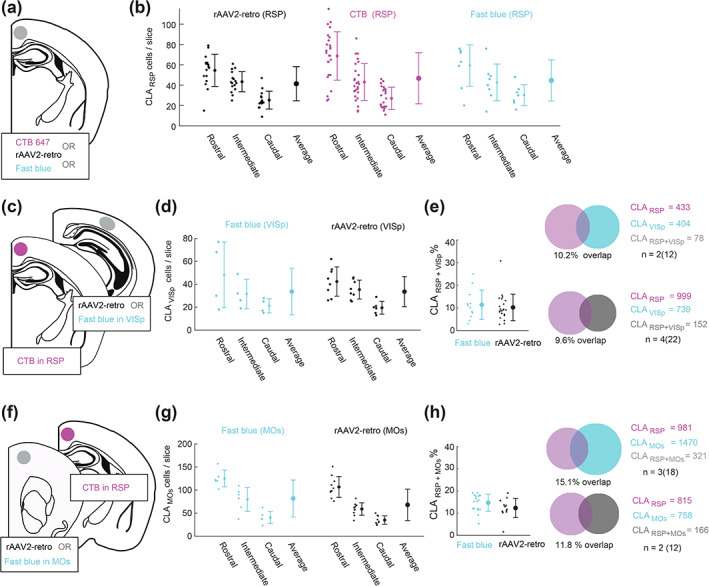FIGURE 2.

Comparing the efficacy of different retrograde tracers. (a) A schematic showing the injection of CTB647, rAAV2‐retro‐GFP (or rAAV2‐retro‐tdTomato), or fast blue into the intermediate retrosplenial cortex (iRSP). (b) The number of CLARSP neurons detected using each tracer type. The neuron counts were performed in the ipsilateral claustrum at rostral, intermediate, and caudal levels of the claustrum. Each point is from one slice and the mean and SD are shown across all sections. No difference in the average number of neurons counted for each tracer were detected, and all tracers showed similar profiles of decreased claustrum labeling along the rostrocaudal axis. (c) A schematic depicting the injection of rAAV2 or fast blue into primary visual cortex (VISp) together with CTB‐647 into the RSP. (d) The number of CLAVISp neurons labeled with rAAV2 or fast blue was not significantly different. (e) The number of co‐labeled claustrum neurons projecting to RSP and VISp was not significantly different between the experiments where fast blue was used (n = 2 mice, 12 slices), or rAAV2 was used (n = 4 mice, 22 slices). (f–h) the same as (c–e) except for the CLAMOs pathway. There was no difference between the number of neurons labeled by fast blue or rAAV2 in the CLAMOs pathway, and the percentage of co‐labeled neurons was not significantly different between experiments with CLARSP(CTB) + MOs (fast blue) or CLARSP (CTB) + MOs (rAAV2) [Color figure can be viewed at wileyonlinelibrary.com]
